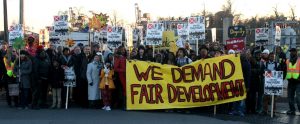Environmental Justice
All people deserve to live, work, and play in healthy environments. But low-income neighborhoods and communities of color often bear disproportionate health burdens from environmental pollution.
The Environmental Integrity Project seeks to serve environmental justice communities by engaging directly with residents, making air and water pollution data more accessible, and reducing pollution through environmental permit reviews and advocacy work.
Air & Water Pollution Data
Our team extracts and analyzes data from dense files to make it available (and understandable) to the public. We also use our own monitoring equipment to collect air quality data in certain neighborhoods located near heavy industry and port facilities in Baltimore and Houston. We use the information that we gather to assist local partners and to promote policy, permitting, and enforcement decisions that measurably reduce the pollution produced in and around overburdened communities.
Permit Reviews
We examine permits for current and proposed projects that would impact environmental justice communities, and identify areas where these permits are not as strong as they could be or fall short of compliance with environmental laws. Our work has resulted in improved environmental monitoring, reductions in pollution, and stronger protection of public health. For example, our scrutiny of a proposed permit for a crude oil export terminal in Baltimore resulted in Houston-based Targa Terminals withdrawing the project in June 2016 after Maryland regulators demanded more information.
Community Engagement
The most effective advocates for protecting the health of communities are its residents. We engage with local grassroots groups, students, and community leaders to provide information about how to influence and improve the decisions of government agencies. We also inform residents about their rights under environmental law, and provide assistance with environmental issues of local concern.
Baltimore, Maryland
Since 2011, EIP has had a program dedicated to helping residents and partner groups in Baltimore to track and reduce pollution in the city’s most industrialized neighborhoods and to ensure that citizen voices are heard in environmental decision-making. Our program focuses on communities in South Baltimore and Dundalk, which are located close to large industrial areas and exposed to pollution from sources including industrial plants, oil terminals, and diesel trucks and trains.
Our goal is to assist these communities with obtaining critical information about pollution affecting their neighborhoods and to limit risk as much as possible to human health and quality of life. To date, we have worked to reduce pollution from trash incinerators, raw sewage in city streams, coal export terminals, coal power plants, oil terminals seeking to transport potentially explosive Bakken crude oil by rail, and a port terminal permitted to discharge toxic and carcinogenic hexavalent chromium into nearby waters. We have also helped communities to support the creation of good manufacturing and assembly jobs in the offshore wind industry.
Neighborhood Air Quality and Health Data
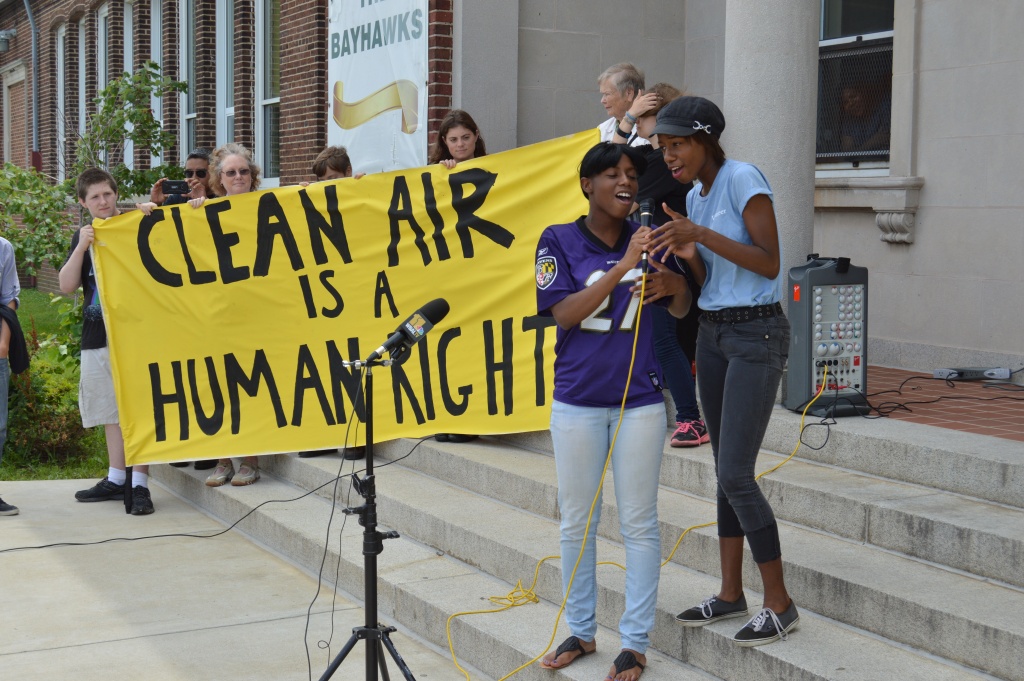 Many industrialized communities, including those in Baltimore City, do not have information about the levels of air pollution or related health statistics in their neighborhoods. In Maryland, communities only gained access to information about asthma rates for geographic areas smaller than counties in September 2016. EIP works in Baltimore – and other cities like Houston, Texas – to make neighborhood-level air quality and health information accessible to the public.
Many industrialized communities, including those in Baltimore City, do not have information about the levels of air pollution or related health statistics in their neighborhoods. In Maryland, communities only gained access to information about asthma rates for geographic areas smaller than counties in September 2016. EIP works in Baltimore – and other cities like Houston, Texas – to make neighborhood-level air quality and health information accessible to the public.
EIP Curtis Bay Particulate Air Quality Monitoring Project
Between the spring of 2013 and the summer of 2015, EIP monitored for fine soot-like particles (PM2.5) in the Curtis Bay neighborhood in South Baltimore because the closest state-run monitor is over four miles from this community. PM2.5 is a pollutant associated with burning coal and other materials and it can cause premature death due to heart and respiratory disease. Watch our researchers, Troy and Kira, explain the project.
Air Quality Monitoring in Curtis Bay, Maryland from Environmental Integrity Project on Vimeo.
Reports
June 2012: Air Quality Profile of Curtis Bay, Brooklyn and Hawkins Point, Maryland
June 2016: Citizen Air Quality Monitoring in Curtis Bay, Baltimore
June 2016: PM2.5 Citizen Sampling Guide
December 2017: Asthma and Air Pollution in Baltimore City
Trash Incinerators
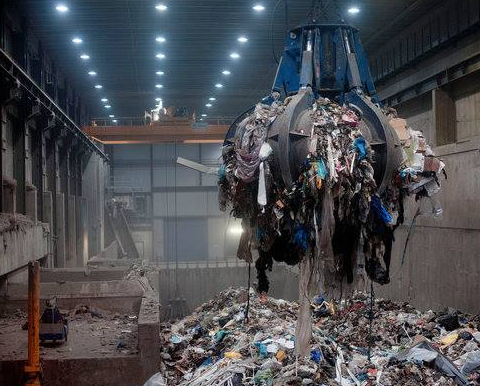 Trash-to-energy incinerators are huge emitters of greenhouse gases and they emit more pollution per energy generated than coal plants for many air pollutants, including the air toxics lead and mercury, and nitrogen oxides, which cause ground-level ozone to form. Baltimore is already home to Maryland’s largest trash incinerator, operated by Wheelabrator Baltimore, L.P., and a second incinerator – which would have been the largest in the country – was permitted in 2010 in Baltimore about four miles from the existing incinerator. Maryland treats trash incinerators as renewable energy sources under its Renewable Portfolio Standard.
Trash-to-energy incinerators are huge emitters of greenhouse gases and they emit more pollution per energy generated than coal plants for many air pollutants, including the air toxics lead and mercury, and nitrogen oxides, which cause ground-level ozone to form. Baltimore is already home to Maryland’s largest trash incinerator, operated by Wheelabrator Baltimore, L.P., and a second incinerator – which would have been the largest in the country – was permitted in 2010 in Baltimore about four miles from the existing incinerator. Maryland treats trash incinerators as renewable energy sources under its Renewable Portfolio Standard.
Reports, News, and Documents
October 2011: Waste-to-Energy: Dirtying Maryland’s Air by Seeking a Quick Fix on Renewable Energy?
August 2015: EIP and eighteen environmental, health, faith, and social justice groups call on the Maryland Department of the Environment to find that Energy Answers’ permit has expired due to lack of construction.
February 2016: Baltimore Residents File Notice of Intent to Sue over Nation’s Largest Trash Incinerator
March 2016: Maryland Department of the Environment invalidates Energy Answers air pollution permit, agreeing with our legal arguments.
Reducing NOx pollution from Baltimore’s BRESCO Incinerator
Since late 2016, EIP has been working with a coalition of groups that are pressing the Maryland Department of the Environment (MDE) to set strong new limits on the amount of nitrogen oxides (NOx) pollution that can be emitted by the trash incinerator in Baltimore City, known as the BRESCO incinerator. Baltimore’s air quality does not meet federal ozone standards, and MDE is required to ensure that large sources of ozone-forming pollution, like the BRESCO incinerator, in the area meet EPA’s Reasonably Available Control Technology (RACT) requirements. BRESCO is Maryland’s largest incinerator and, in 2016, was the fifth largest NOx-emitting plant in the state.
EIP and our partners at the Chesapeake Bay Foundation (CBF) have been coordinating on legal and technical analyses as we push MDE to set the strongest possible NOx limits for this aging incinerator. You can find the major comments and presentations that we’ve submitted during MDE’s public stakeholder process here:
- Read EIP’s October 27, 2016 comments on behalf of several groups
- View EIP’s January 17, 2017 PowerPoint presentation to MDE and stakeholders
- Read EIP’s May 9, 2017 comments
- Read CBF’s May 9, 2017 comments
- Read EIP and CBF’s joint October 6, 2017 comments
- Read EIP and CBF’s joint May 11, 2018 comments
- Read EIP and CBF’s joint September 21, 2018 Comments
Read EIP’s 2022 testimony in support of a Maryland state bill making trash incinerators ineligible for renewable energy subsidies.
Read EIP’s 2022 comments, drafted with Earthjustice and on behalf of several groups, asking the EPA to reduce NOx pollution from incinerators.
Crude Oil and Coal Terminals
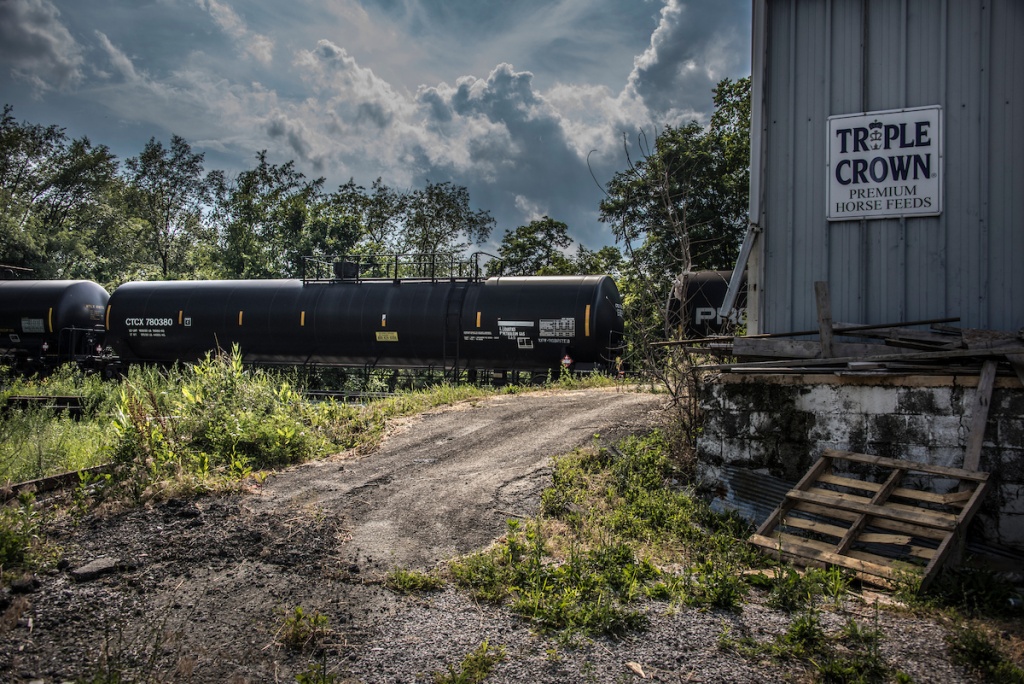 Fossil fuels shipment terminals can pose risks to communities in port neighborhoods.
Fossil fuels shipment terminals can pose risks to communities in port neighborhoods.
Baltimore is the second largest coal-exporting port on the East Coast, and coal dust and other pollutants can adversely affect residents living near terminals that ship coal.
News and Documents
January 2023: EIP joined the South Baltimore Community Land Trust and Community of Curtis Bay Association in asking state regulators to require major improvements to the air pollution permit for the CSX Transportation coal export terminal in Baltimore. Community members have complained about dust from the terminal for years and much more can be done to control this pollution.
Clean Energy and Equitable Development
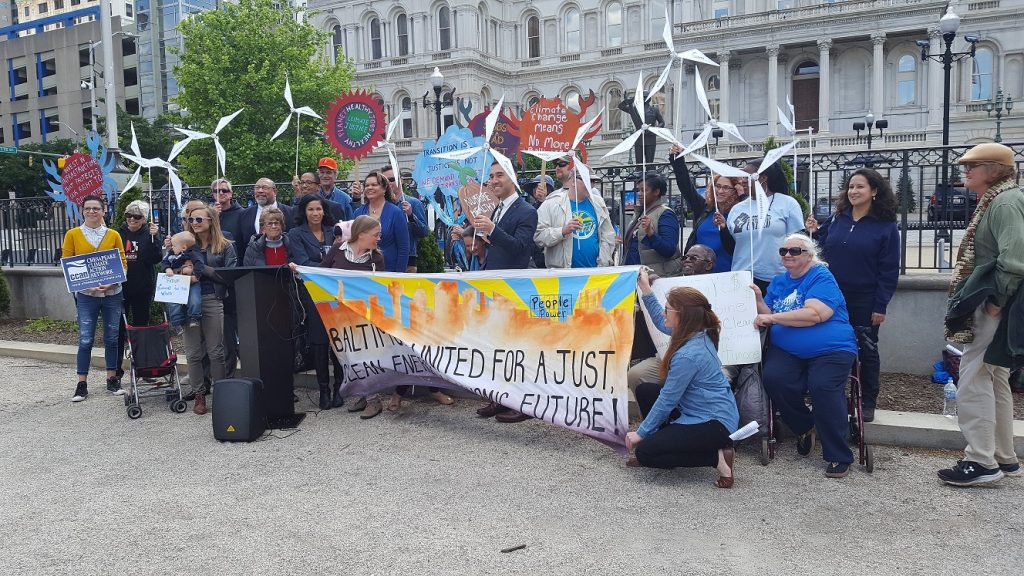 Environmental justice communities deserve healthy air and access to good jobs in sustainable industries. Working with our community and advocacy partners, EIP is helping to bring good assembly and manufacturing jobs in the offshore wind industry to Baltimore. In May 2017, the Maryland Public Service Commission approved renewable energy subsidies for two offshore wind farms to be located off of Maryland’s Eastern Shore. The state conditioned these credits on the developers making substantial investments in the Baltimore area, including a combined $40 million for port upgrades at Sparrows Point, the industrial peninsula that once housed the Bethlehem Steel plant. In 2014, the U.S. Department of Energy found that offshore wind jobs in the Mid-Atlantic would likely be well-compensated, with average annual earnings (including benefits) of $141,000 for onsite workers, $78,000 for supply chain job holders, and $57,000 for induced jobs.
Environmental justice communities deserve healthy air and access to good jobs in sustainable industries. Working with our community and advocacy partners, EIP is helping to bring good assembly and manufacturing jobs in the offshore wind industry to Baltimore. In May 2017, the Maryland Public Service Commission approved renewable energy subsidies for two offshore wind farms to be located off of Maryland’s Eastern Shore. The state conditioned these credits on the developers making substantial investments in the Baltimore area, including a combined $40 million for port upgrades at Sparrows Point, the industrial peninsula that once housed the Bethlehem Steel plant. In 2014, the U.S. Department of Energy found that offshore wind jobs in the Mid-Atlantic would likely be well-compensated, with average annual earnings (including benefits) of $141,000 for onsite workers, $78,000 for supply chain job holders, and $57,000 for induced jobs.
April 2017: Watch a video by the Real News Network on our offshore wind campaign.
April 2017: Working with Clean Water Action, we helped to generate 400 written citizen comments asking state regulators to go big on offshore wind!
Sewage
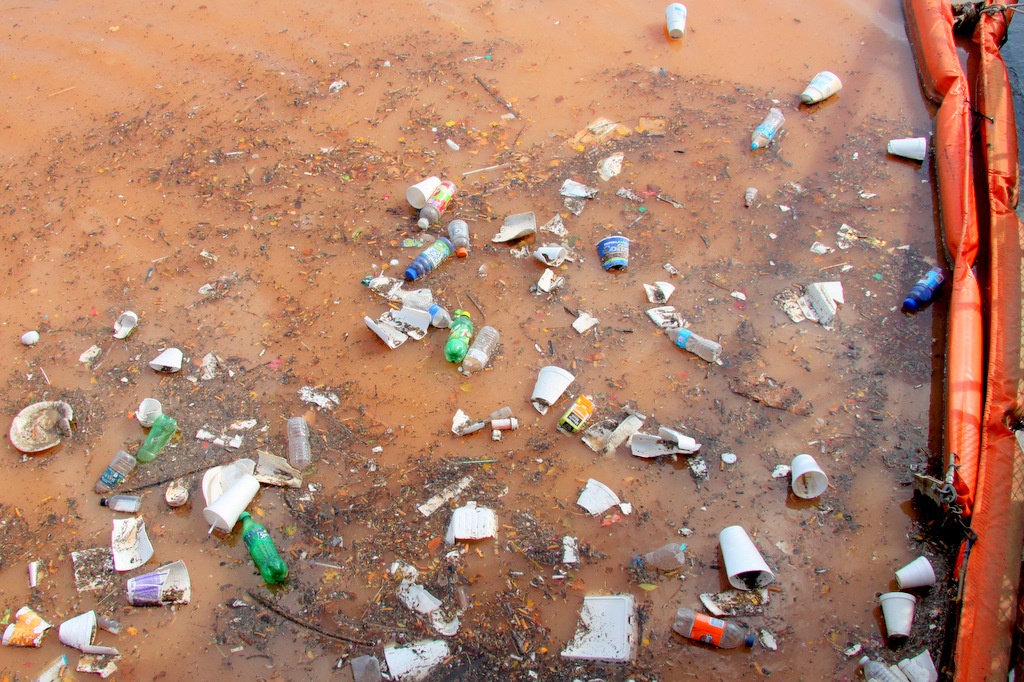 For decades, Baltimore City’s leaky, overloaded sewer system has routinely released high volumes of raw human waste into neighborhood streams, Baltimore Harbor, and the Chesapeake Bay. Raw sewage contains bacteria, viruses, and other microorganisms that can cause illnesses such as cholera, dysentery, hepatitis, cryptosporidiosis and giardiasis. The risks are increased when untreated sewage backs up into basements in homes and other buildings. If left untreated, raw sewage microorganisms can persist in building materials for months and can cause toxic fungi and molds, which grow in moist environments, to develop. Hundreds of Baltimore City residents are affected each year by sewage backups. Responding to these backups is particularly difficult for low-income residents, who often have difficulty paying for cleanup, repairs to their basements, and replacement of personal property.
For decades, Baltimore City’s leaky, overloaded sewer system has routinely released high volumes of raw human waste into neighborhood streams, Baltimore Harbor, and the Chesapeake Bay. Raw sewage contains bacteria, viruses, and other microorganisms that can cause illnesses such as cholera, dysentery, hepatitis, cryptosporidiosis and giardiasis. The risks are increased when untreated sewage backs up into basements in homes and other buildings. If left untreated, raw sewage microorganisms can persist in building materials for months and can cause toxic fungi and molds, which grow in moist environments, to develop. Hundreds of Baltimore City residents are affected each year by sewage backups. Responding to these backups is particularly difficult for low-income residents, who often have difficulty paying for cleanup, repairs to their basements, and replacement of personal property.
In 2002, the EPA, the state of Maryland, and Baltimore officials signed a consent decree requiring the city to fix the sewer lines and end all overflows and spills by January 1, 2016. But despite more than tripling water and sewer bills to pay for upgrades, in 2016, the city had only finished about a third of the required work and asked the courts for an extension until 2010.
EIP is working to push the city to provide clean-up services and financial assistance to homeowners whose properties have been damaged by sewage backups. And we are also collaborating with partners at Blue Water Baltimore to watchdog the continued work on system improvements and reporting of sewage overflows, to make sure that the city reports spills to the public as required by law.
Reports, Press Releases, and Documents
December 2015: Stopping the Flood Beneath Baltimore’s Streets
June 2016: EPA Proposes 14 Year Extension for Baltimore Sewage Repairs
August 2016: EIP and Blue Water Baltimore Submit Comments and Petition to EPA and MDE on Proposed Revisions to Baltimore Sewage Consent Decree:
Drinking Water
It’s difficult to imagine there are communities in the United States where it is unsafe to drink the tap water from municipal water systems. Yet in the wake of the lead contamination crisis in Flint, Michigan, the Environmental Integrity Project conducted investigations in Texas and California that found tens of thousands of residents – often lower-income neighborhoods and communities of color have been exposed for years to drinking water from public systems tainted by illegal levels of arsenic, a carcinogen. Worse yet, state and local officials often fail to warn the residents not to drink the contaminated water.
Our report on Texas drinking water, “Don’t Drink the Water,” released in March 2016, inspired more than 130 news articles and resulted in real government action to solve the problem. After U.S. Representative Henry Cuellar (D-Laredo) read an article about EIP’s report in the San Antonio Express News, he pushed the U.S. Department of Agriculture and Webb County to come up with $2 million to build a water filtration plant to solve the water contamination problem for the tiny town of Bruni, Texas — Bruni had more than eight times the legal limit of arsenic, the worst in the state.
After EIP released a report with similar findings in California, the U.S. House Energy and Commerce Committee invited EIP Executive Director Eric Schaeffer to brief committee staff on ways to improve the safety of public drinking water systems across the U.S. And then U.S. Representatives Frank Pallone Jr. (D-NJ) and Paul Tonko (D-NY) introduced a bill on September 23, 2016 called the Safe Drinking Water Act Amendments of 2016 that that will improve public reporting requirements and increase federal investments in clean drinking water nationwide.
Reports and News
March 2016: 51,000 Texans Exposed to Toxic Levels of Arsenic in Drinking Water for more than a Decade
August 2016: Victory in EIP’s Fight for Clean Drinking Water in Rural Texas
September 2016: Drinking Water for 55,000 Californians has Illegal Levels of Arsenic
September 2016: New Bill Would Help Protect Consumers from Contaminated Drinking Water

